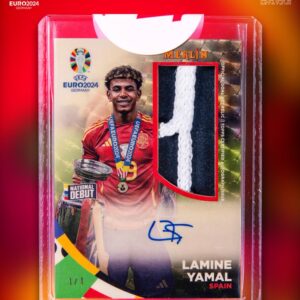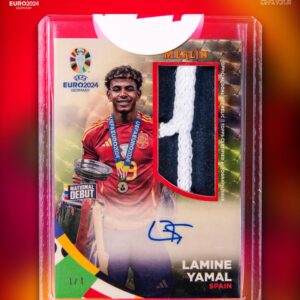In the enchanting world of Magic: The Gathering, there’s no greater disillusionment than finding out that your cherished card is a mere imitation. For both the casual player and the die-hard collector who meticulously hunts every variant of the legendary Black Lotus, counterfeits can lead to a kind of heartbreak usually reserved for tales of epic misplay. Yet, as counterfeit Magic cards grow ever more sophisticated, so too can you sharpen your skills in sniffing them out. Equip yourself with a detective’s acumen, and transform your love of the game into a bastion against fakes with these insider tips.
First things first: trust your senses. Much like a sommelier swirls a glass of wine, let the feel of the card speak to you. Genuine Magic cards have a recognizable matte texture. It’s an unspoken chapter of the card’s story—a contrast from the slick, almost unnervingly glossy texture of imposters, which feel more like they belong in a fast-food laminated menu than within your collection. When in doubt, side-by-side with a land card from the equivalent set products, the mystery will likely unravel.
Next, let there be light—literally. The flashlight test is your mobile ally in uncovering counterfeit cards. Authentic Magic cards are crafted with a blue core, a defining trait nestled between paper layers. When you hold these cards up to a flashlight, expect to see light filtering through in a soft, cool undertone, a peaceful whisper of authenticity. Counterfeits often err in texture and thickness, resulting in either impenetrable shadows or a blinding over-exposure that shouts artificial from rooftops.
For a more intimate probe into card authenticity, enlist a 30x magnification jeweler’s loupe. This pocket-sized powerhouse magnifies secrets concealed within your cards’ smallest recesses. The rosette pattern, a tapestry of tiny, round dots, forms floral motifs on real Magic cards’ intricate artwork and text boxes. Unmasking a counterfeit often reveals muddled pixels or erratic, inconsistent grids—tell-tale signs your card is a victim of digital deception.
Delve further into the subtle artistry of Magic cards, and inspect the black ink used for card names, mana symbols, and text. Authentic cards use a separate, unadulterated black layer that remains bold and solid under magnification. Counterfeit cards, on the other hand, frequently reveal a composite black—constructed from a mixture of colored dots—that appears fuzzy or out of focus under scrutiny.
The distinctive green “L” dot on Magic cards’ backs serves as a notorious, nearly foolproof signifier of authenticity. Direct your loupe towards the green mana symbol. Nestled within the yellow-green border lies a red dot masterpiece that forms a tiny upside-down “L”. If your card’s appearance is lacking—missing, misaligned, or a blurred mess—consider yourself forewarned: the card is likely a fake.
Modern advancements in Magic card protection have ushered in a new epoch of safeguards. For instance, post-Magic 2015 rares and mythics are adorned with an oval hologram stamp. Authentic holograms present a polished, flush aspect engraved with microtext—subtle planeswalker symbols and mana icons are signatures of the card’s veracity. An imposter, meanwhile, may appear grainy, seem inaccurately elevated, or could bear the semblance of mismatch—like a battered sticker transferred carelessly from another deceptive card.
Despite these grandiose tools and tips at your disposal, destructive tests like tearing or bending a card in search of the fabled blue core should remain your last resort. Modern counterfeiters aren’t stuck in amateur antics; their methods might just withstand these old-school stress tests. Favor non-destructive methods, preserving the sanctity of your collection intact.
Layer these investigative tactics, because identifying a counterfeit Magic card isn’t reliant on a singular “eureka!” moment. It’s a cumulative effort, a game of deduction. Start with texture, unravel it with light, and cement your suspicion with the jeweler’s loupe. As you hone your skills, not only will your detection abilities become sharper than a newly printed foil, but your whole deck will rest safer, shielded from deceit.
Just as in any legendary quest, knowing what you’re up against transforms you into a more astute collector—and importantly, reinforces the integrity and honesty of the game. With patience and practice, your card collection remains pure, propelling your love for Magic: The Gathering farther into realms of grandeur untouched by the shadowy hand of counterfeiters.






